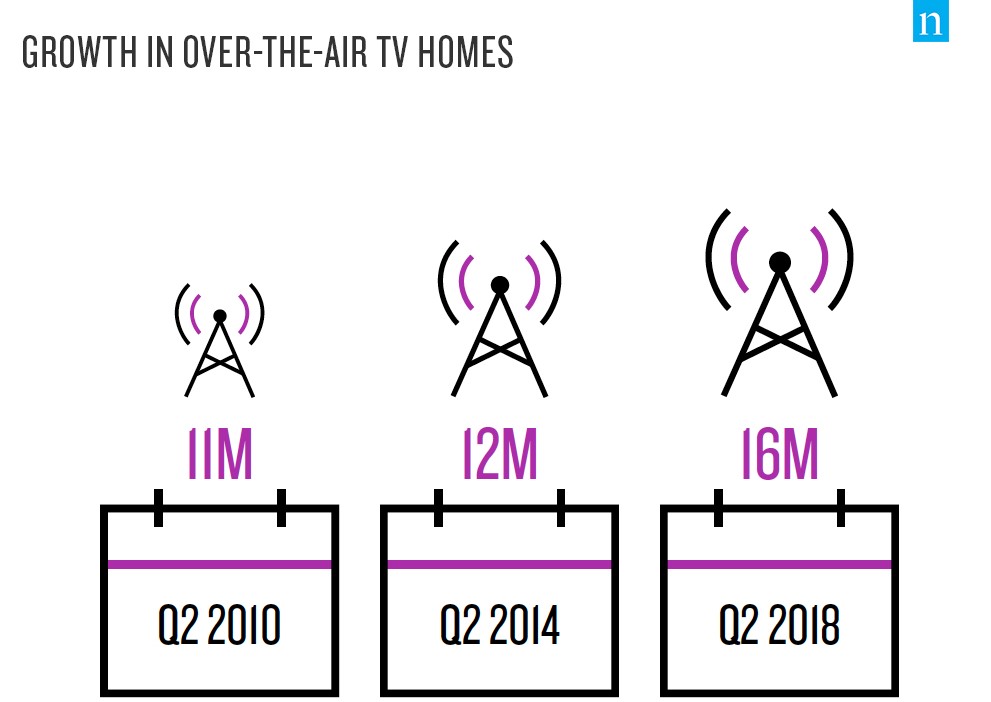OTA Homes Cross 16M Mark, Per Nielsen
NEW YORK—Many TV consumers are making their way back to over-the-air TV according to a recent study from Nielsen, but thankfully the rabbit ears aren’t. As many consumers continue to decide to cut the cord on cable packages, OTA offers them free TV through a digital antenna that can even provide HD quality content. But it’s not just traditional OTA offerings that have led to this growth, as streaming services also factor into the equation.
Overall, per Nielsen’s May 2018 population estimates, more than 16 million homes in the U.S. fall into the OTA category, just over 14 percent nationwide. At the start of the decade, 2010, that number was at 11 million. That represents a near 50 percent increase over eight years, with a potential for continued growth as more consumers consider an a la carte approach to television.

What constitutes an OTA home today though is different than what it may have been in the past thanks to streaming services. From the May 2018 report, 41 percent of homes considered OTA are “traditional,” meaning they do not have a streaming service provider. The remaining 59 percent do have one or more streaming subscriptions; this also includes homes that have a virtual video multichannel programming distributor (vMVPD), aka a skinny bundle, that allows them to stream cable programs (think Hulu or YouTube TV).
The makeup of the “traditional” households and the streaming households are noticeably different. The average age for a house without a streaming service is 55, while those with are 36 on average. Roughly half of the homes that have a streaming subscription are married and/or have children, while those numbers fall to 28 percent and 27 percent respectively in non-streaming homes. Another big difference is the median income; non-streaming homes average $21,000, while streaming homes come in at $44,500.
Daily viewing in OTA homes comes to about three hours a day for broadcast content on TV, however that differs depending on a home’s setup. Homes without a streaming service average about four hours and 51 minutes of broadcast a day; those with just a streaming service spend a little more than an hour and a half watching broadcast; and those with access to a skinny bundle spend nearly equal time between broadcast (an hour and 12 minutes) and cable TV options (hour and four minutes).
For more information, view the Nielsen report here.
The professional video industry's #1 source for news, trends and product and tech information. Sign up below.
